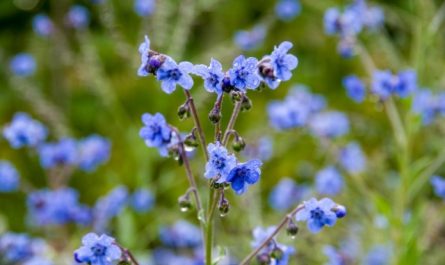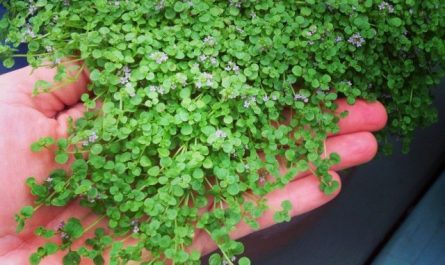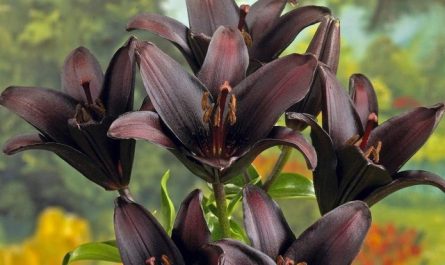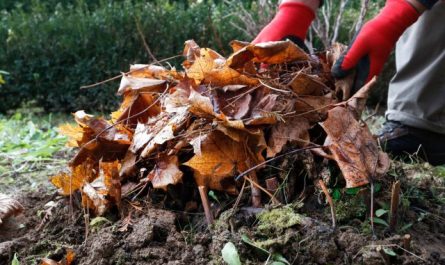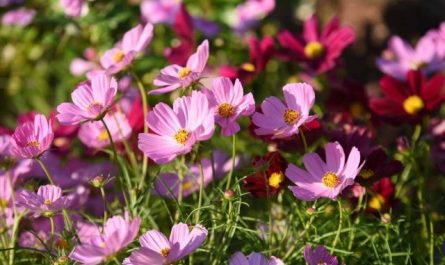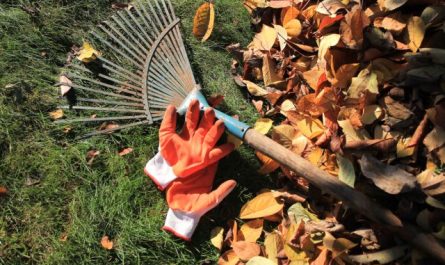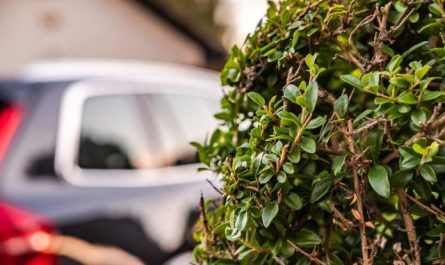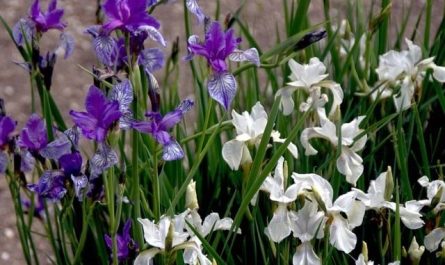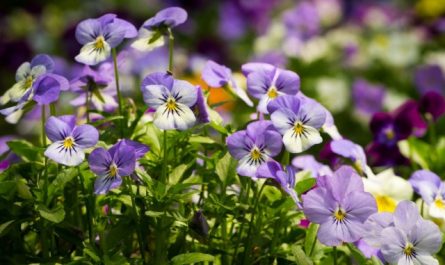Catalpa is a very beautiful and spectacular deciduous tree, reaching a height of 5-6 meters in the climate of the Central zone. It grows without problems on rich, light and well-drained soils, in fully illuminated places, it loves moisture. The flowering period lasts 25-30 days (from mid-June). Each inflorescence contains up to 50 flowers. The fruits, thin long (up to 40 cm) green “icicles”, remain hanging on the branches almost the entire winter, giving the tree an original look and arousing the curiosity of passers-by. The genus has 10 species. Basically, three varieties are cultivated.
Catalpa speciosa).
- Homeland – the USA, where it reaches 35 m in height. In the Central zone of Russia it grows as a small tree or large bush. Beautiful, large, up to 7 cm, fragrant flowers of creamy-white color, with a wavy edge, inside with two yellow stripes and numerous purple-brown dots. Fruits, up to 45 cm long, decorate the tree from the second half of summer. Resistant to dust, smoke and gases in urban conditions.

© Mark Wagner
Catalpa bignonioides, or common catalpa (Catalpa bignonioides).
- Native to the southeast of North America. The tree is up to 20 m tall, with spreading branches that form a broadly rounded crown. It grows quite quickly. The first flowering occurs in the fifth year of life.

© Jean-Pol GRANDMONT
Catalpa ovata.
- Originates from China. Reaches 6-10 meters in height. The crown is spreading. Flowers are fragrant, creamy white, in panicles, up to 25 cm long. Blooms in July-August. Light-loving, demanding of humidity and soil fertility.

© Fanghong
Features of landing
Using: catalpa combines well with oak, deciduous magnolias, but also looks impressive in single plantings.
Location: sunny places protected from the wind are recommended, since large and delicate catalpa leaves are severely damaged by drafts (distance between plants is 4-5 m).
The root collar should be at ground level, and the root ball should be 10-20 cm above ground level (after planting, the soil settles and compacts). Before planting, the root system must be saturated with moisture.

© KENPEI
Soil mixture: humus, leaf soil, peat, sand (3:2:1:2). When planting, also add ash (5-8 kg) and phosphorus flour (50 g). Mulch with peat (5-7 cm).
Additional fertilizing: during the season, feed 2-3 times with liquid manure (1:10), 1 bucket for each adult plant. One organic feeding can be replaced with Kemira-universal (120 g / sq. m). Before feeding – abundant watering.
Watering: in hot weather, water once a week, 1 buckets per plant. If the summer is not hot, watering can be reduced to 2-2 times a month.

© Epibase
Loosening: on the bayonet of a shovel, while removing weeds.
Haircut, pruning: In spring, dry and damaged branches are cut out.
Diseases and pests: resistant. Occasionally may be damaged by Spanish fly (spray: kinmix, decis, karbofos, – twice).
Preparation for winter: young plants should be tied with spruce branches and covered with dry leaves (remove in spring). Standard plants should be wrapped with two layers of burlap or lutrasil to protect them from frost. It is advisable to mulch the trunk circles of mature trees (with a 15 cm layer of dry leaves).
vegetation: from mid-May. Shoot growth stops in August. Leaf fall occurs after frosts. Leaves fall completely green.

© tree-species
Reproduction: catalpas reproduce successfully without any special treatment by seeds and summer cuttings (survival rate is about 50%).
Materials used:
- The florist’s desk magazine «I love flowers» No. 1 January 2009
